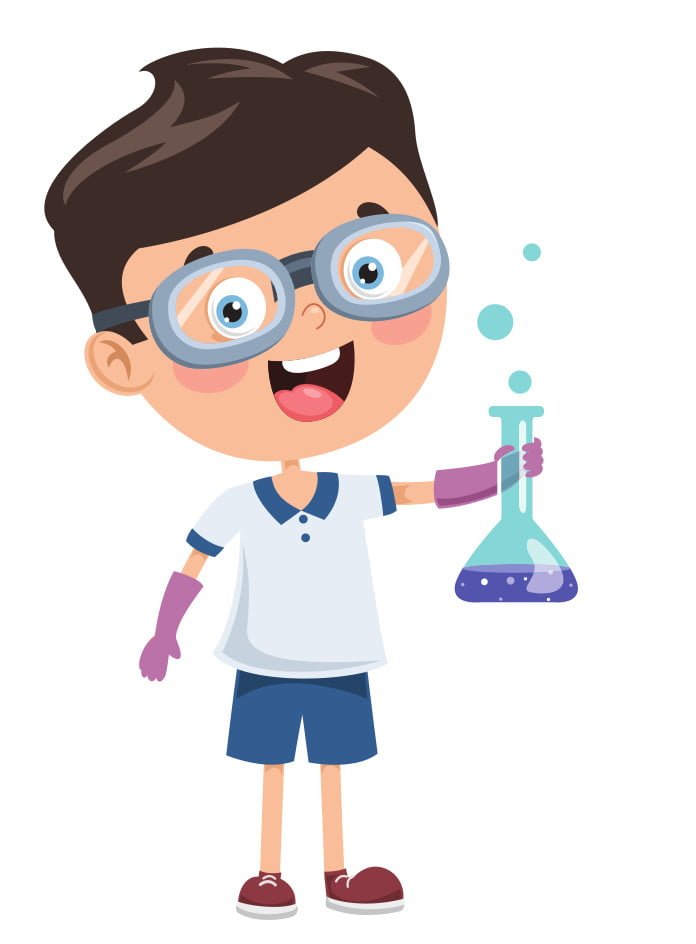Yep, this one’s hard to believe. At the age of just fourteen, Taylor Wilson achieved nuclear fusion, making him the youngest person in history to do so (and only the 32nd person ever). There was of course a lot of expert help and dedicated mentors along the way. But there was also an incredible amount of energy, insatiable curiosity, grit, and self-learning on Taylor’s part that went into it. A third factor that perhaps receives less attention, but seems like a crucial element nonetheless, was a healthy dose of excellent parenting.
By accounts expertly captured in Tom Clynes’ excellent and very readable book “The Boy who Played with Fusion,” Taylor was a unique kid in his precociousness, audacity, and genuine irrepressible enthusiasm for science. In an interview with Tom Bilyeu on his show Impact Theory, Taylor surmises that his own innate curiosity is the essential ingredient that drove him to keep discovering everything he could about physics, chemistry, rocketry, and later nuclear fusion. He just had to know (a trait shared with the likes of famous physicist Richard Feynman).
Taylor’s audacity knew almost no bounds as a child. According to Clynes’ biography, at age nine he declared he wanted to be an astronaut and began building rockets on the weekend with his father. By the time he was in third-grade, he could give his classmates an entire lecture on rocket propulsion. Towards the end of that same school year, he wasn’t just putting model rockets together, he was working on building them himself in his grandmother’s garage. This included starting to synthesize his own fuels for his rocket ships and fireworks displays. Later, his insatiable curiosity and single-minded pursuit of nuclear energy would lead him to mine his own uranium in the mountains of Nevada.
The approach of Taylor’s parents point to a unique upbringing by two people who cared deeply about the development of their son’s gifts. What they may have lacked in technical education, they seemed to more than make up for in good parenting ability. They nurtured Taylor’s talents and provided every opportunity they reasonably could to expand his growing horizons and knowledge base. Some key takeaways from their parenting style include:
- Tolerance. Though they weren’t scientists themselves, Taylor’s parents showed a very high degree of tolerance for their son’s experiments (even when they appeared to be borderline dangerous). Most parents are happy for their kids to have posters of the periodic table on their bedroom walls and play with safe, pre-packaged chemistry sets. The Wilsons let their son run experiments way outside the comfort zone of most parents, using purchased, recovered, and cobbled together secondhand items. They compensated for their lack of technical training by bringing in knowledgeable friends and contacts to evaluate Taylor’s lab safety procedures in the garage, and were always impressed (and usually satisfied) with Taylor’s exhaustive explanations and seeming concern with safety.
- Exposure. The Wilsons seemed to do everything they could to increase Taylor’s exposure to the things he was interested in. From visiting space museums, to going to space camp, to building rockets with him on the weekends. If they could reasonably provide it, they seemed to do everything they could to feed their son’s learning and experience. This despite being an otherwise “normal” middle/upper middle class family of two working parents. Granted, not all families have the resources the Wilsons had. But if parents have the ability to increase their children’s exposure to the things they genuinely seem interested in, it always seems worthwhile.
- Connections. The Wilsons did their best to set up meetings between Taylor and people he would be interested in meeting. From astronauts who had walked in space, to the head of the Nuclear Engineering Department at the University of Tennessee, connections and networking seemed ingrained in the Wilson parenting method. Taylor no doubt increasingly drew people into his orbit on his own merit and ability to speak at very deep technical levels on the scientific aspects of his experiments. But Taylor’s parents always seemed to have an eye out for how to expand their son’s horizons in terms of contacts and mentors.
- Schooling. The Wilsons were fortunate to have the resources to send Taylor to a private elementary school, where he received a higher degree of accommodation and flexibility from his teachers. Though the school wasn’t expressly for gifted or talented students, the teaching staff seemed very dedicated and talented, and there was an emphasis on individual learning approaches for what was right for each child. This allowed the teachers to change the curriculum and approach to better suit their prodigy of a student. Later, when Taylor and his brother were able to test into the unique Davidson Academy at the University of Nevada-Reno, they made the difficult decision to put their lives in Arkansas on hold so that the entire family could move to Nevada and give their sons access to the incredible tuition-free high school.
- Positive emotional development. The Wilsons seem to earn high marks in terms of providing a supportive, loving environment, while hitting the right balance between opening up space for Taylor to develop at an accelerated pace, while at the same time letting their gifted child forge his own unique path.
It should be acknowledged that the Wilsons took risks with Taylor’s upbringing (both physical and emotional). Many of his experiments, from rocketry, to chemistry to nuclear fusion were highly risky in the conventional sense. Some may even (and certainly did) paint the Wilsons’ parenting decisions as dangerous and irresponsible. Though unlike some other kids who have tried audacious scientific studies on their own, Taylor was remarkably transparent about his experiments, and had an unusually high level of safety protocols baked into his lab procedures. Taylor’s parents also arranged for outside reviews of his safety protocols.
The Wilsons recognized that they had a highly motivated child prodigy on their hands, and seemed to want to give him the room he needed to fully reach his potential. If the Wilsons sensed that Taylor wasn’t taking safety seriously, they likely would’ve reacted differently. Indeed, they almost shut down his experimenting a couple of times. It seems that parents should certainly consider physical, emotional, and psychological dangers and risks as they decide how much leeway to grant their children. On the other hand, if parents find themselves acting as stewards of what might just be a “once in a generation” talent, some intelligent risks on their part may have to be taken. In these cases, expecting (and achieving) a high level of safety protocols is even better.
One of the most amazing things about Taylor’s story is that he knew very early on what he wanted to do: Create nuclear fusion. As only the 32nd (and of course the youngest) person in history to create nuclear fusion, he still thought it took him too long to achieve. Remarkably, he thought he’d get it sooner. For a fourteen year-old to think that it should’ve taken him a shorter time to achieve genuine nuclear fusion is on some level absurd sounding, and on another level inspiring.
The second amazing thing is that Taylor immediately started testing hypotheses with his new ability to generate isotopes through nuclear fusion. And his ultimate goal was to create isotopes that could be used in medical applications, particularly in helping with cancer treatments. So the overarching and ultimate goal was to help people. These values were instilled from somewhere, and it starts early. “Between the notes,” Taylor’s parents must’ve had a major influence here.
Taylor seems a lot like Elon Musk or Thomas Edison. He’s an extrovert and a showman by nature, but his extreme passion is applying science to real world problems. This combination, as well as his uncanny ability to deliver and think of novel approaches to old problems, has inspired many others. Yes, there may be a tendency towards showmanship or borderline narcissism in such individuals, but there’s also extreme energy, passion and enthusiasm that inspire the rest of us. It’s amazing to see passionate, driven people such as Taylor achieve such progress on huge problems, and at such a young age to boot. It gives us faith that perhaps there are problems we can help solve, and contributions we can make. As long as we think bigger, apply our curiosity, and are willing to take unconventional approaches to big problems, who’s to say what any one of us can achieve?
So what’s Taylor up to now? Per his 2013 TED talk, he working on “modular reactors that are built essentially on an assembly line and they’re trucked anywhere in the world. You plop them down and they produce electricity.” Pretty awesome stuff. He’s also creating venture-backed companies around the commercial aspects of his potentially world changing ideas. In addition, he’s a fellow at the unique Helana, a think tank that “works alongside some of the world’s most remarkable people to develop and lead projects that help build a better tomorrow.”
And he’s still just in his twenties. We can’t wait to see what’s next.





